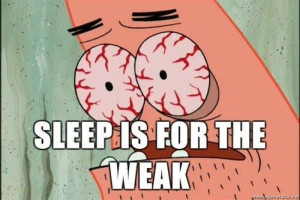As you know, smartphones and mobile devices are widely used and quickly changing the way we can access information, reach audiences, and impact the mobility space.

I found this article particularly interesting because apparently when comparing an iphone 5 to an iphone 6, or even an iphone 6 to an iphone 6 plus, if there were advertisements displayed on both, the iphone 6 plus user will be more likely to be persuaded to purchase the product than the iphone 6. We can infer from the study, that people who viewed video ads on larger screens tended to experience feelings of trust. This study sheds some light on how people may be processing information on slightly larger screens and in fact, people who viewed video advertisements on slightly larger screens had the “feeling of immersion” as if they were inside actually experiencing this virtual reality. As the researcher stated, “If you feel like you’re there, you may be more inclined to trust things more, You feel like you’re almost in the environment, so it must be real.”

The researchers who released their findings in an issue of Human Communication Research, explained how the study suggests consumers want to reflect on how the screen sizes and types of media are affecting them before they buy a product or sign up for a service. Essentially this could be the reason why companies like AT&T, Verizon and Sprint continue to push new (larger) phones on customers when they are in the store.
Researchers recruited 120 undergraduate students in Korea assigning one group an Android smartphone with a 3.7-inch screen and another group an Android smartphone with a 5.3-inch screen. These participants used the smartphones to view a bus schedule, and had to watch an advertisement before shown the bus schedule on the mobile devices. Once the session was finished, participants had to fill out a questionnaire that determined the depth of information processing, the level of trust, and buying intentions.
This article i believe would be considered an experimental study, because out of the 120 recruited undergraduate students in Korea that were used for this study, researchers assigned one group an Android smartphone with a 3.7-inch screen and another group with an Android smartphone with a 5.3-inch screen. The researchers then measured the way people process information/ads on the two different sized smartphones to figure out if buying intentions varied depending on size of mobile device.
The putative causal variable measured in this study would be how people may be processing information on these slightly larger smartphone screens. The putative response variable measured would be the change in buying behavior, and those with the larger screen devices becoming more inclined to purchase a product than those with the smaller screen devices. I found this very interesting and intriguing. Next time you purchase a new larger phone possibly for the holidays, think about the science that goes into the way we process information and the different depths of thinking and the effect it may have from looking at an advertisement.
Works Cited:
http://news.psu.edu/story/382346/2015/11/24/research/bigger-smartphone-screens-can-change-customers-buying-intentions
https://i.ytimg.com/vi/nIG_DAGHJQ4/maxresdefault.jpg
http://onlinelibrary.wiley.com/doi/10.1002/mar.20080/abstract?systemMessage=Wiley+Online+Library+will+have+be+unavailable+on+Saturday+5th+December+from+10%3A00-14%3A00+GMT+%2F+05%3A00-09%3A00+EST+%2F+18%3A00-22%3A00+SGT+for+essential+maintenance.+Apologies+for+the+inconvenience.
www.sciencedirect.com/science/article/pii/S0378720606000899
googleimages.com






























